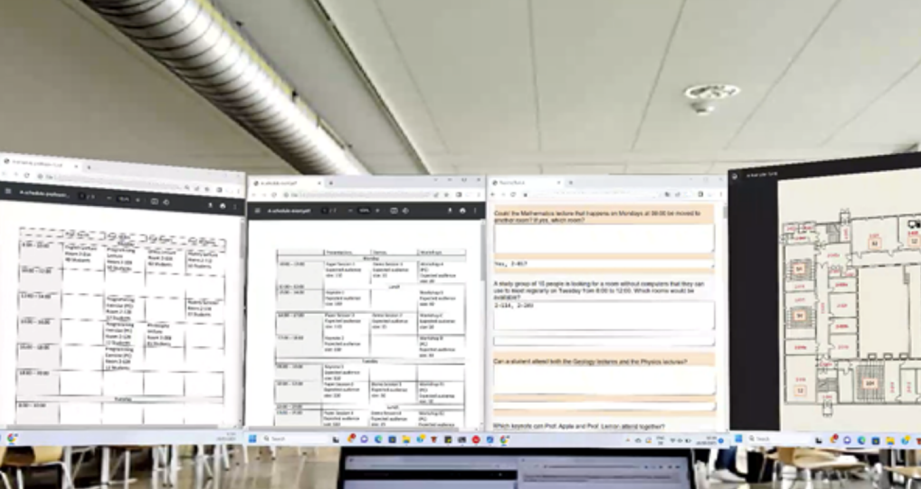Working with XR in Public: Effects on Users and Bystanders
PubDate: Oct 2023
Teams: Coburg University of Applied Sciences and Arts;University of Cambridge;University of Bayreuth
Writers: Verena Biener, Snehanjali Kalamkar, John J Dudley, Jinghui Hu, Per Ola Kristensson, Jörg Müller, Jens Grubert
PDF: Working with XR in Public: Effects on Users and Bystanders

Abstract
Recent commercial off-the-shelf virtual and augmented reality devices have been promoted as tools for knowledge work and research findings show how this kind of work can benefit from the affordances of extended reality (XR). One major advantage that XR can provide is the enlarged display space that can be used to display virtual screens which is a feature already readily available in many commercial devices. This could be especially helpful in mobile contexts, in which users might not have access to their optimal physical work setup. Such situations often occur in a public setting, for example when working on a train while traveling to a business meeting. At the same time, the use of XR devices is still uncommon in public, which might impact both users and bystanders. Hence, there is a need to better understand the implications of using XR devices for work in public both on the user itself, as well as on bystanders. We report the results of a study in a university cafeteria in which participants used three different systems. In one setup they only used a laptop with a single screen, in a second setup, they combined the laptop with an optical see-through AR headset, and in the third, they combined the laptop with an immersive VR headset. In addition, we also collected 231 responses from bystanders through a questionnaire. The combined results indicate that (1) users feel safer if they can see their physical surroundings; (2) current use of XR in public makes users stand out; and (3) prior XR experience can influence how users feel when using XR in public.


